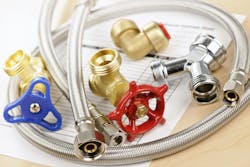St. Louis updates plumbing code to 2021 Uniform Plumbing Code
The International Association of Plumbing and Mechanical Officials (IAPMO) announced that the City of St. Louis, Missouri, has updated the city’s Uniform Plumbing Code (UPC), updating the city’s code from the 2009 edition of the UPC to the 2021 edition.
The adoption was recommended by the city’s Committee of Plumbing Code Review and has the support of St. Louis’ plumbing industry. Alderman Bret Narayan (Ward 24) sponsored Board Bill 182 and guided it through the adoption process.
“I applaud the work of Alderman Narayan, the St. Louis Health and Human Services Committee and the Board of Aldermen in updating the city’s plumbing code from the 2009 UPC to the 2021 UPC,” said Brian Rogers, senior vice president of Field Services for IAPMO. “This action helps ensure the residents of St. Louis have access to a newer code that reflects changes in water conservation and plumbing technology. The adoption of the 2021 UPC will benefit citizens throughout St. Louis and reaffirms the city’s commitment to help ensure that all buildings have safe and cost-effective plumbing systems that meet the demands of today’s consumers.”
One of the many significant updates found in the 2021 UPC is the addition of the Water Demand Calculator™ (WDC).
Other noteworthy updates in the 2021 edition include:
- Alternate Water Sources for Nonpotable Applications
- Nonpotable Rainwater Catchment Systems
- Alternate Plumbing Systems
- Potable Rainwater Catchment Systems
- Sustainable Practices
“Updating the Uniform Plumbing Code as recommended by the city’s Committee of Plumbing Code Review ensures St. Louis residents have access to the most progressive, sustainable, and resilient plumbing code available,” Narayan said. “The adoption of the 2021 Uniform Plumbing Code is the highest level of health and safety protection and will benefit all citizens of St. Louis well into the future.”
The UPC is the only national model plumbing code with significant updates for water pipe sizing in buildings since the development of Hunter’s Curve more than 80 years ago. It is the result of a multiyear, IAPMO-led effort to develop a new statistically based pipe sizing method stemming from a need to address profound water safety and wasted water and energy concerns due to oversized water supply pipes in homes and buildings.
The UPC was introduced in Los Angeles in 1928 and formally published as the Uniform Plumbing Code in 1945. It is developed using IAPMO’s consensus development procedures accredited by the American National Standards Institute (ANSI).
